There are items at home that might seem old and trashy, but oftentimes they just need some reworking or repurposing so that they can be useful again. It’s no different with that old car stuck in the garage; it might have been sitting there for so long that plants have already sprouted in some areas.
An aged car might look old, useless and irreparable, but with a little dedication and elbow grease, you just might be able to bring it back to its former glory.
If you want to revive that old set of wheels that are gathering dust on your driveway, Philkotse.com can help with this easy guide.
1. Evaluate the state of the car
You’ll need to see if the car is still salvageable by evaluating its physical state. The bodywork and paint job might still be in good condition, or they could have serious signs of corrosion such as rust that necessitates stripping down or even replacing panels to prevent the damage from spreading.
For internals, some cars will need only a few remedial services such as oil changes, repaints or component upgrades, while others might require an extensive mechanical and electrical overhaul.
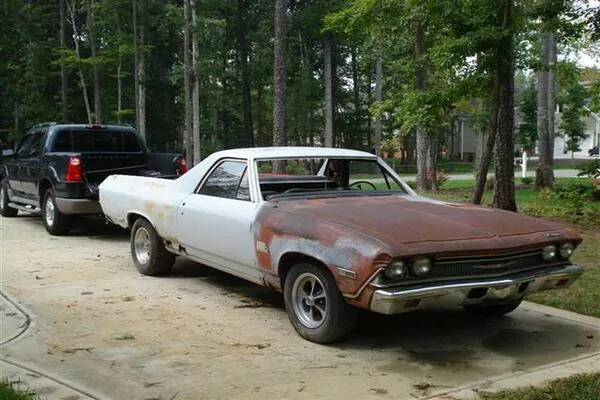
It's important to thoroughly evaluate an old car to determine whether a restoration project is feasible or not
2. Make an estimate of what the vehicle will need
List down everything that the car might need according to your assessment, noting the respective costs and totaling the amount. Doing so gives you a bigger picture as to the extent of repair that the car needs to undergo. It will also help you in planning the pace of the restoration in a way that brings you maximum results with minimal fuss.
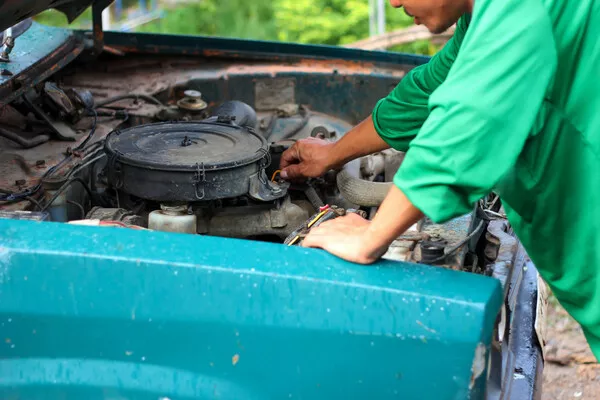
Plot down the estimated total amount you’ll need in order to restore the old car
>>> Related: What you need to know about old school cars in the Philippines
3. Start with the aesthetics
Dents
The car’s exterior is always exposed to the elements, and it’s the first thing anyone notices when looking at a car. There will most likely be dents on the bodywork, which you can fix. Take note that not all dents can be fixed by simply popping out the depressed portion.
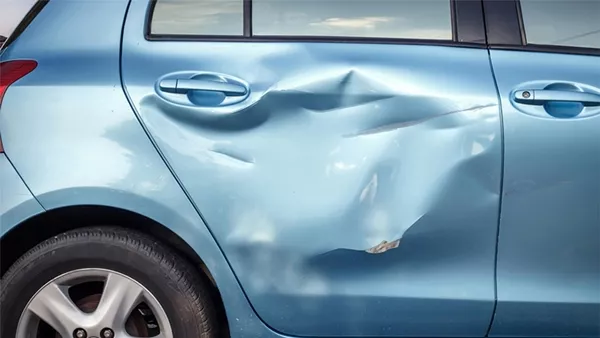
There will most likely be dents on the bodywork, which you can fix
There are instances that require a highly-specialized technique called paintless dent repair or PDR. If your car’s restoration requires the latter technique, you’ll need to grind the paint off. The dent will then be pulled and prepped with body filler. The primer will be applied for metal protection, then the panel will be repainted.
>>> Check out now:
- Basic Car Restoration: Easy to follow steps and guidelines
- Simple hacks on how to repair car dents without costing you a fortune.
Rust
Thoroughly inspect the vehicle for signs of rust, not just on the visible portions of the car but on the small corners and spots tucked away from view. Remember that even a small amount of rust can cause big problems, especially if the corrosion spreads undetected.
If you come across rust formations on any part of the car, steps must be immediately taken to remove it before the damage gets worse. The worst thing you can do to a rust patch is to paint over it since it only covers the corrosion and doesn’t address it at all.
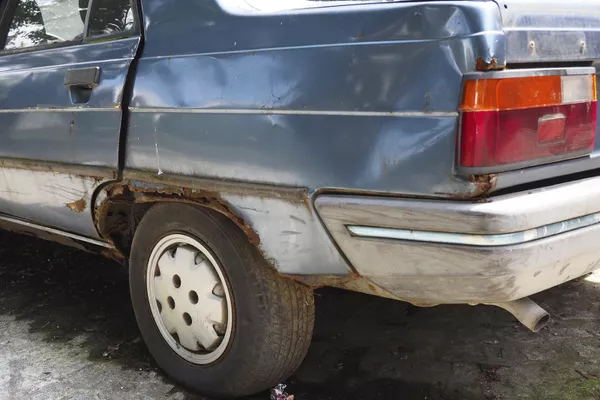
Remember that even a small amount of rust can result in several problems
Paint
If the dents and rust on the body shell have been fixed, now examine its paint. If the coat still has a healthy gloss, it means that the car was not involved in any serious car collision which might have damaged its frame, and the paint did a great job in protecting the metal panels from rust.

The paint did a great job in protecting the metal panels from rust
In case you notice scratches on the surface, check them with your fingers; if they’re deep enough to the touch, they will most likely need some sanding before the body is repainted. If the scratches are only minimal, such as those sustained from a car wash, hopefully, the damage can be buffed away.
If parts of the car’s bodywork feature bare metal, primer needs to be applied before the basecoat. Just remember that the bodywork should be treated with primer and the appropriate sealant to protect it from rust.
>>> Read more: 7 common mistakes when taking care of your car paint & ways to avoid them.
4. Repair and polish any chrome parts
More often than not, old cars have chrome mirrors, bumpers, and other parts; these add shine and appeal to the car. However, these accents are not as tough as they look. Minimal imperfections can be repaired, but if the chrome parts are seriously damaged, you'll have to replace or re-chrome them.
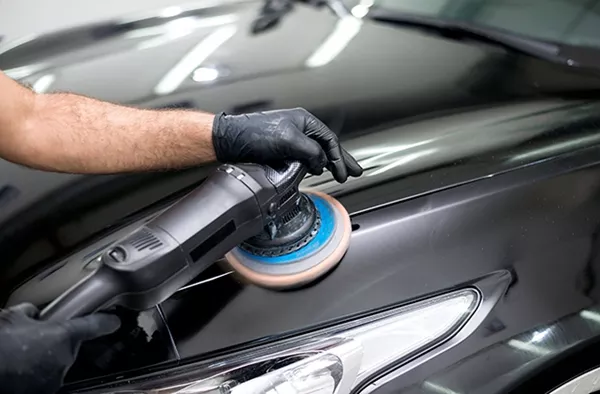
If the chrome parts are seriously damaged, you'll have to replace or re-chrome them
5. Restoring the interior
Floors
Do a visual inspection of the whole floor, checking underneath the seats and floormats. If there are holes in the floor, welding a patch may be needed, followed by priming and painting the car’s interior.
This project requires a considerable amount of time, but if the floor only has blemishes or slight imperfections that don’t threaten the car’s functionality, you can easily cover them with good quality car floor mats.

Do a visual inspection of the whole floor, checking underneath the seats and floormats
>>> >>> Also check: 4 simple steps to do a proper car interior detailing.
Car seats
Remove the car seats by removing the bolts on the runners that attach them to the floor. Thoroughly inspect the car seats. If they don’t need any repairs, then you can subject the interiors and the car seats to proper detailing. If the seats have cuts and gashes, you can have it repaired and reupholstered.
Dashboard
Most of the time, a proper rubdown is all it takes to make your dashboard look good as new; just make sure to use the appropriate cleaner whether the dash has plastic or leather surfaces. However, if there is major damage, you will have to replace the damaged parts.
6. Restoring performance
Engine
Assuming the car’s engine is still in good condition, a good cleaning and oil change are all that it needs. If not, then may have to repair or rebuild it, necessitating that it be taken down, picked apart, and the individual parts inspected.
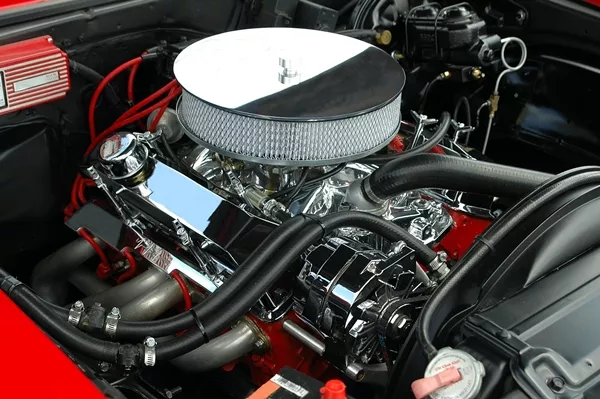
If the car’s engine is still in good condition, cleaning and oil change is all that it needs
>>> Grasp your attention: 4 Essential Care Tips for Maintaining Your Car Engine.
Replace worn out parts
Check for any worn-out parts like the spark plug wires, drive belts, pulleys, and tires. Make an inventory of what needs to be replaced and repaired. Tires should also have the right tire pressure.
Drivetrain maintenance
You need a solid drivetrain for your car to work properly. Have the transmission fluid checked, topping it up or replacing it as needed. If the car you’re restoring is a manual transmission, check the clutch to see if it needs to be replaced as well. If it’s a rear-wheel drive, you also need to check the condition of the driveshaft and the rear differential.
Exhaust system
An old car might not exactly be compliant with today’s emission standards, but it’s important that its exhaust system is working as efficiently as it can. Check for leaks or blockages that can affect the car’s exhaust. If you hear a clanging sound every time you rev up the engine, the muffler and tailpipe might be corroded and need to be replaced.

It’s important that its exhaust system is working as efficiently as it can
Recent posts
- Maintenance tips: DIY discovery of bad car clutch plates Jul 30, 2019
- What happens if leaving your car unused for a long time? Aug 16, 2022
- Top 7 reasons to keep an old car Oct 22, 2018
- 7 Basic Car Maintenance All Philippine Drivers Should Know Oct 19, 2020
- Your old beloved car - To sell or not to sell? Jul 31, 2018











